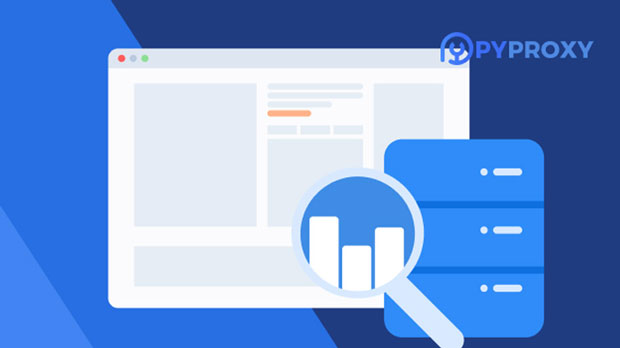What factors determine the quality and stability of a SOCKS5 proxy server?
When considering the quality and stability of a socks5 proxy server, several key factors come into play. These factors include server performance, server location, bandwidth availability, connection handling capabilities, security protocols, and maintenance frequency. Each of these elements plays a crucial role in ensuring that users experience fast, reliable, and secure proxy services. In this article, we will break down these factors to understand their individual impact and how they collectively contribute to the overall performance of socks5 proxies. By the end, you will have a clear understanding of what makes a SOCKS5 proxy reliable and why stability is crucial for consistent performance. 1. Server PerformanceServer performance is one of the most important factors influencing the quality and stability of a SOCKS5 proxy. The performance of a server depends on its hardware specifications, processing power, and the load it handles. A high-performance server can handle more simultaneous connections without degrading the quality of service. On the other hand, low-performance servers may struggle under high loads, leading to slower speeds, increased latency, and frequent disconnections.For SOCKS5 proxies, server performance is crucial because users typically use these proxies for activities that demand high-speed internet access, such as streaming, gaming, or web scraping. If a proxy server fails to meet the required performance standards, it can result in significant delays, lag, and interruptions. Therefore, choosing a proxy provider with strong server performance ensures that users experience minimal service disruption.2. Server Location and Geographical DistributionThe geographical location of the socks5 proxy server plays a vital role in its overall stability and performance. A proxy server that is located closer to the user typically offers lower latency and faster connection speeds, while a server located farther away may experience delays due to longer transmission paths. This is especially important for tasks requiring real-time communication, such as online gaming or live streaming.Moreover, having a diverse set of server locations worldwide is beneficial for users who want to access content restricted to certain regions. A broad geographical distribution ensures that users can choose a server location that best fits their needs, whether for performance optimization or accessing geo-blocked content. Additionally, multiple server locations provide redundancy, which increases the overall stability of the SOCKS5 proxy network, preventing downtime caused by server failures or overload.3. Bandwidth and Connection SpeedBandwidth and connection speed are directly tied to the stability and quality of a SOCKS5 proxy server. High bandwidth ensures that the server can handle large volumes of data without slowing down or experiencing packet loss. A proxy server with insufficient bandwidth may result in throttled speeds, poor streaming quality, and slow download or upload speeds.The speed at which a SOCKS5 proxy can establish and maintain a connection is also crucial. Slow connections can lead to increased latency and degraded user experiences. For applications that require fast and consistent internet access, such as video conferencing or cloud-based gaming, connection speed becomes even more critical. Reliable providers ensure that their servers have sufficient bandwidth capacity and optimized network routing to deliver smooth and fast connections to users.4. Security and Encryption ProtocolsSecurity is a cornerstone of any proxy service, and SOCKS5 proxies are no exception. The security protocols and encryption methods implemented by the server impact both the safety of user data and the overall stability of the connection. Although SOCKS5 itself does not inherently offer encryption, many providers complement SOCKS5 with additional security features such as SSL/TLS encryption or integration with VPN services.For users concerned about privacy, a proxy server that employs strong encryption methods ensures that their data remains protected from potential eavesdroppers. Additionally, secure proxy servers are less likely to be compromised by malicious actors or subject to attacks that could destabilize the service. Strong encryption and proper security protocols prevent man-in-the-middle attacks, data interception, and other security breaches, which are crucial for maintaining both the reliability and safety of the SOCKS5 proxy.5. Load Balancing and Traffic ManagementEffective load balancing is essential for maintaining the stability and reliability of SOCKS5 proxy servers, especially when dealing with high-traffic situations. Load balancing helps distribute traffic evenly across multiple servers, ensuring no single server becomes overloaded, which could lead to slower speeds or outages. Without load balancing, proxy servers may struggle to handle large numbers of simultaneous connections, resulting in degraded performance and unstable service.Traffic management systems also ensure that the proxy server operates efficiently under varying loads. By prioritizing certain types of traffic or managing bandwidth allocation dynamically, these systems help maintain stable and high-quality connections, even during peak usage periods.6. Maintenance and Uptime GuaranteesThe quality and stability of SOCKS5 proxies are directly influenced by how well the servers are maintained. Regular maintenance ensures that servers are updated with the latest security patches, bug fixes, and performance optimizations. A lack of maintenance can result in vulnerabilities, performance issues, and potential downtime, all of which can negatively affect the reliability of the service.Uptime is another critical aspect. Reliable SOCKS5 proxy providers often offer uptime guarantees, ensuring that their servers are operational most of the time. Frequent downtimes or server crashes not only disrupt the user experience but can also lead to a loss of productivity, especially for businesses or users who rely on the proxy for professional purposes. Choosing a provider with a proven track record of uptime and proper maintenance schedules can greatly enhance the stability of the SOCKS5 proxy.7. Support and Customer ServiceThe quality of customer support plays a significant role in the overall user experience with SOCKS5 proxy servers. In cases where users experience issues with their proxy service, responsive and knowledgeable customer support can quickly resolve technical problems and provide guidance on troubleshooting. A provider that offers 24/7 customer support ensures that users can get help whenever needed, which can significantly minimize downtime or disruptions in service.Good customer support can also help users optimize their use of the SOCKS5 proxy, offering assistance with configurations, server selection, and other technical matters that may impact performance and stability.ConclusionIn conclusion, the quality and stability of SOCKS5 proxy servers are determined by a combination of several factors, including server performance, location, bandwidth, security features, load balancing, maintenance practices, and customer support. By understanding these factors, users can make informed decisions when selecting a SOCKS5 proxy provider, ensuring they choose a service that offers high performance, reliability, and security.When evaluating SOCKS5 proxy services, it’s essential to look beyond basic pricing and consider the technical specifications and service features that will have the greatest impact on the user experience. A well-maintained, high-performance server network with strong security, fast connection speeds, and reliable uptime can make a world of difference for users relying on proxies for sensitive or high-demand applications.
2024-12-26
























































